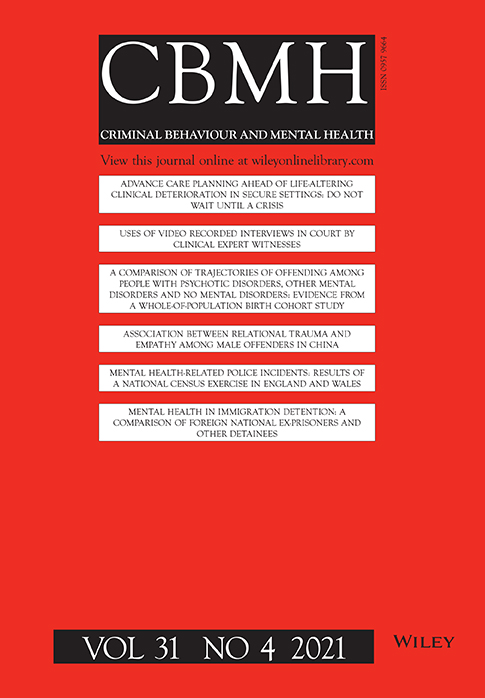A comparison of trajectories of offending among people with psychotic disorders, other mental disorders and no mental disorders: Evidence from a whole-of-population birth cohort study
Abstract
Background
Trajectory analysis has been used to study long-term offending patterns and identify offender subgroups, but few such studies have included people with psychotic disorders (PDs) and these have been restricted to adult offenders.
Aims
To compare offending trajectories among 10–26-year-olds with PDs with those with other mental disorders (OMDs) or none (NMD) and identify associated risk factors.
Methods
This is a record-linkage study of 184,147 people born in Western Australia (WA) 1983–1991, drawing on data from WA mental health information system, WA corrective services and other state-wide registers. Group-based trajectory modelling was used to identify offending trajectories.
Results
Four offender groups were identified in each mental health status group: G1–no/negligible offending; G2–early onset, adolescent, desisting by age 18; G3–early onset, low rate, offending into early adulthood; and G4–very early onset, high rate, peaking at age 17, continuing into early adulthood. The PDs group had the lowest proportion of individuals with no or negligible offending histories—84% compared with 88.5% in the OMDs group and 96.6% in the no mental disorder group. Within mental health status offender groups, the PDs group was characterised by early or very early onset offending persisting into adulthood, accounting for 5.4% and 3.7% of the group respectively (OMD: 3.8%, 1.5%; NMD: 1.0%, 0.5%). Gender, indigenous status, substance use problems, childhood abuse and parental offending were generally associated with trajectory group membership, although among those with PDs childhood abuse and parental offending were only significant in the early onset-life-course-persistent group.
Conclusions
While most people with PDs never offend, some are disproportionately vulnerable from a particularly early age. If the offending subgroup is to be helped away from criminal justice involvement, interventions must be considered in childhood.
Open Research
DATA AVAILABILITY STATEMENT
Data sharing is not applicable to this article as no new data were created or analysed in this study.




